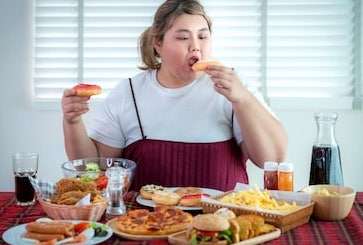Hi Friends of Oompf, its Agnes here. So yes, starting after a long break is always hard, so go easy on yourself. Now is a good time to measure yourself : how have you been doing since you last left off, and many of us have to “reset” after the long break. Let’s understand how to interpret the Inbody Test results and focus on what is key to measure.

The InBody Test provides a comprehensive view of body composition balance such as body water, proteins, minerals, and body fat, which are the components of the human body closely related to the status of our health. Besides these 4 components, the Inbody test can also show you various factors such as how your fats or lean muscles are distributed in the different areas of your body, your BMI as well as calculate an ideal amount of calories you should be consuming daily. Today, I will be focusing on 3 factors; visceral fat, percentage body fat and muscle mass.
Percentage body fat (PBF)
Percentage body fat is essentially calculated by fat mass divided by body weight multiplied by a 100%. An acceptable and ideal body fat percentage is 15% for males and 23% for females. PBF provides a more accurate body assessment for being overweight or obese compared to BMI as BMI is calculated by your bodyweight divided by your height. For example, if you are a bodybuilder and have a higher body weight due to heavier muscle mass, your BMI will inevitably be higher and does not reflect an accurate result of your health.
Visceral fat
Visceral fat or commonly known as belly fat is fat stored around your organs such as the liver, pancreas and intestines. Too much visceral fat increases our risk to heart disease, type 2 diabetes, stroke and even possibly certain cancers. Visceral fat isn’t visible, so we don’t always know it’s there, making it much more dangerous.
Muscle Mass
Muscle Mass is the total mass of body skeletal muscle. Higher muscle mass increases metabolic rate and prevents falls and illnesses. A person who has a higher amount of their weight as muscle mass will burn more calories at rest compared to someone with a lower percentage of muscle mass.
Our goal should be to focus on losing body fat and increasing muscle mass at the same time. Looking at the above sample reading as an example, the visceral fat level of 9 is on the high side, target should be 5 and better. Also, the muscle mass trend is uneven and appears to be reversing, at the same time the percentage body fat is creeping up. The goal of training should be to reverse this ie have muscle mass increase and percentage body fat and visceral fat go down too.
How To Lose Fat And Gain Muscle Mass
Fortunately, with exercise, diet and lifestyle changes, you can lose visceral fat.

1. Strength Training and Cardiovascular Training
Having a program that incorporates both strength and cardio is a powerful method for successful fat loss. Although doing cardio might burn more calories in a single session than weight training, strength or resistance training is important for fat loss as it helps you develop more muscles and having more muscles will lead to greater metabolism which will help you to burn more calories at rest. For cardio to be the most effective and result in the most optimal rate of fat burning, it should be done for only 45min to an hour. Anything longer than that could lead to a repetitive strain injury or burn a great deal of muscle, which will ultimately cause metabolism to slow down, therefore restricting fat loss.
2. High Protein Diet
Diet is equally if not more important in aiding fat loss. Fat loss /Muscle gain diet should a contain high amounts of protein, reduced carbs and sugars. Protein is the building block to grow your muscle and which you need to replenish after training. On the other hand, excess carbs are converted into fats and are digested quickly, resulting in overeating. While you don’t have to go on a keto diet to cut carbs completely, certainly low carb diet will help in fat loss. Also, when choosing carbs, choose good whole carbs like beans, whole grains and fruits that are unprocessed and still contain fibre naturally found in food. Sugar is also a form of carbohydrate and eating it in excess will also cause your body to convert it into fat. It is easy to neglect or underestimate the amount of calories in the sugar you are consuming as well, thus best to reduce if not avoid altogether.
In conclusion, it is important to maintain a disciplined approach in both training and diet. A good balance of strength and cardio training coupled with a high protein, low carb, low to no sugar diet will ensure the best results in aiding your fat loss and muscle gain goals.
Did you find this article useful? Tell us what you think. Email us at [email protected] and share with us how you feel about your training post Circuit Breaker!
Weighttraining #LesMills #Dumbbell #Highintensityintervaltraining #stationarybicycle #Myfitnesspal #fitnessapp #pullup #personaltrainer

